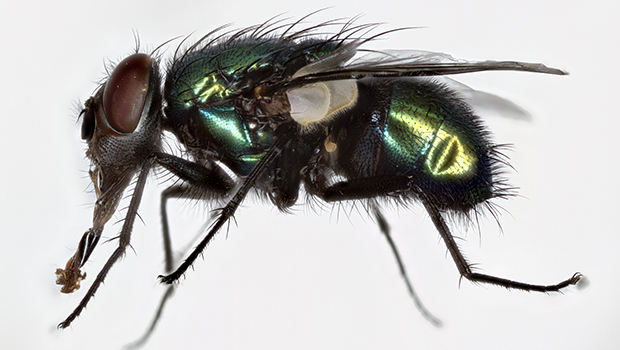Maggot Therapy for Diabetic Wounds?

People with diabetes will do whatever they can to keep wounds from getting infected, but would they be willing to undergo maggot therapy? Researchers have announced they have genetically modified green bottle fly larvae to aid in wound care for people with diabetes and others.
Maggots have long been used as a folk remedy to remove dead tissue in wounds, and researchers are beginning to clinically explore the potential of this unorthodox treatment. In recent proof-of-concept trials, NC State University researchers report they have succeeded in modifying the green bottle fly larvae to secrete human platelet derived growth factor-BB (PDGF-BB), a substance which can help keep cells alive and encourage cell growth.
Small studies have already been done on what is politely called Maggot Debridement Therapy (MDT) for diabetic wounds. In 2011, researchers published findings in the Hawai’i Medical Journal showing that MDT was successfully used to treat 17 of 23 people with diabetes who had wounds that weren’t healing despite multiple therapies. The maggots were inserted into the wound and held there with a mesh adhesive; after a few days, they are then removed. After treatment, the wounds of the 17 patients were completely clean of dead skin, and doctors could see signs of regenerating tissue in the wound area. Researchers believe that when MDT didn’t work, it was because the wounds were too narrow for the maggots to access.
More study has been done on MDT for general wound care, and reports of MDT as a (sometimes accidental) battlefield treatment go back at least 150 years. Reviews of studies on MDT have found that the treatment can help reduce the risk of infection in wounds in general. This is because the maggots consume bacteria that could cause infection, as well as dead skin that could get infected, but don’t tend to go for healthy skin.
With the rise of antibiotic-resistant bacteria, MDT might become even more important in wound care in the future. Also, researchers tout MDT as a cost-effective therapy, which is especially important for diabetic wounds in resource-poor countries.
Researchers report that few patients who are offered MDT refuse it. If you have had a wound that has been slow to heal, you very well might understand why. Whatever works, right?
Want more news on Type 2 diabetes? Subscribe to our newsletter here.





